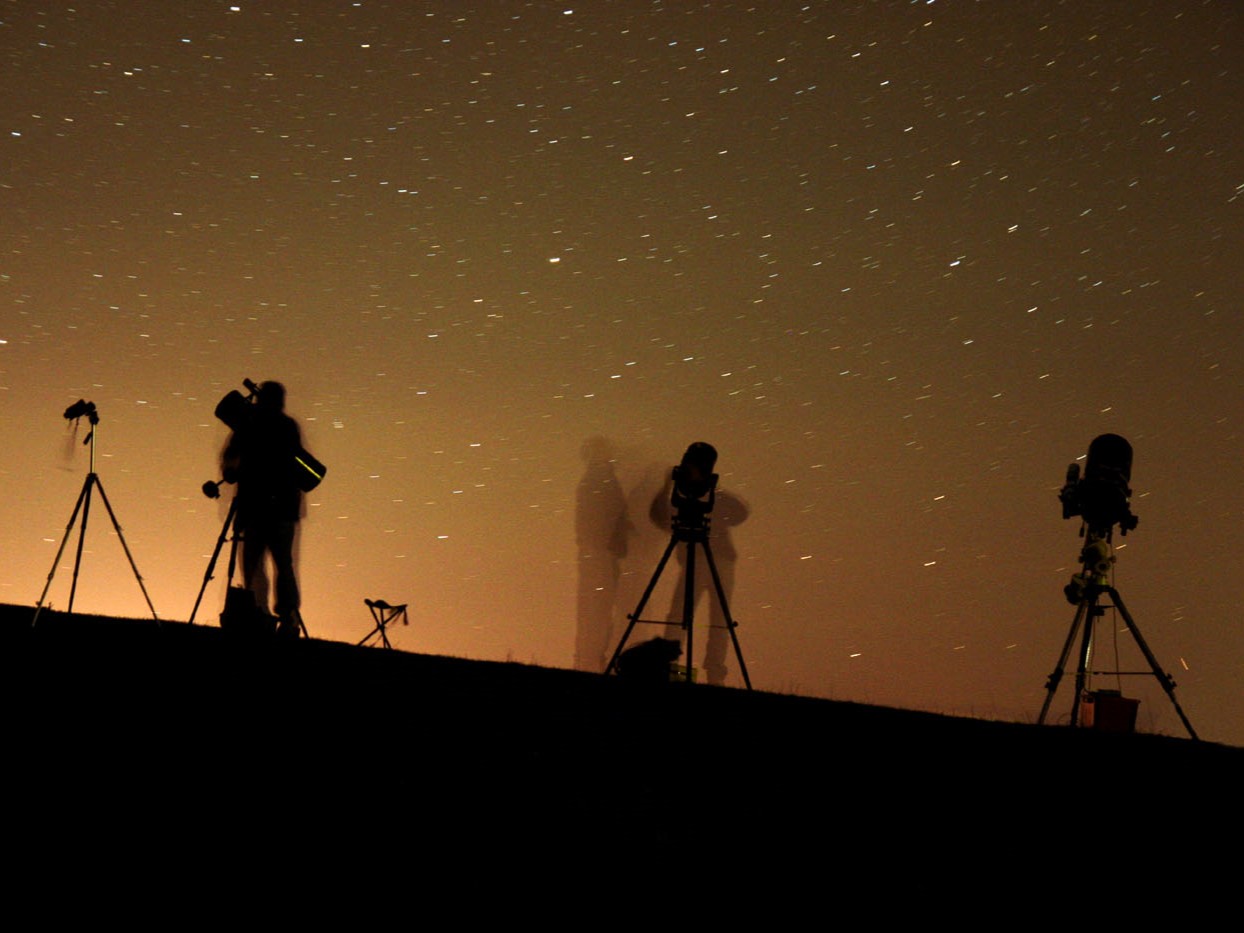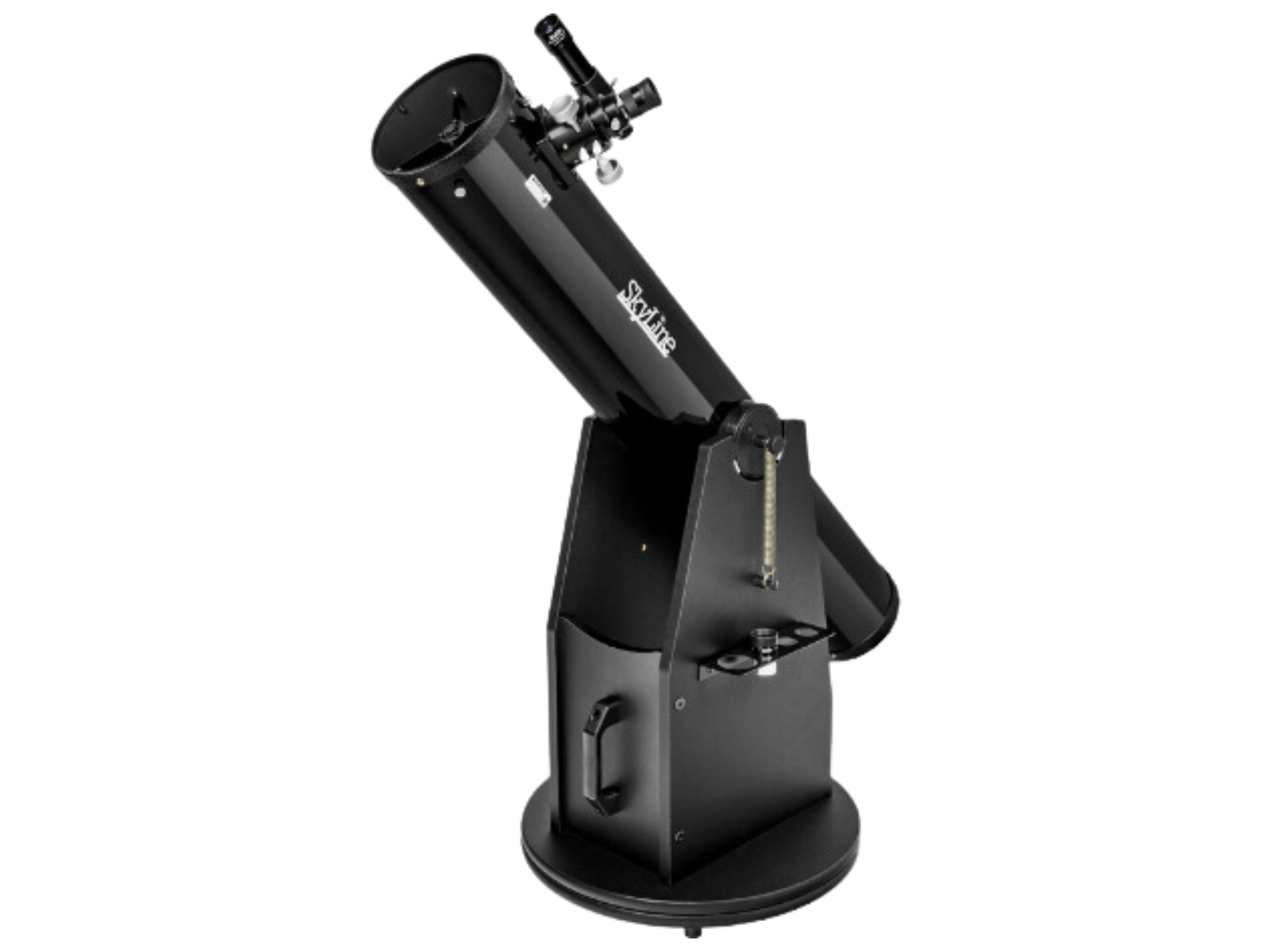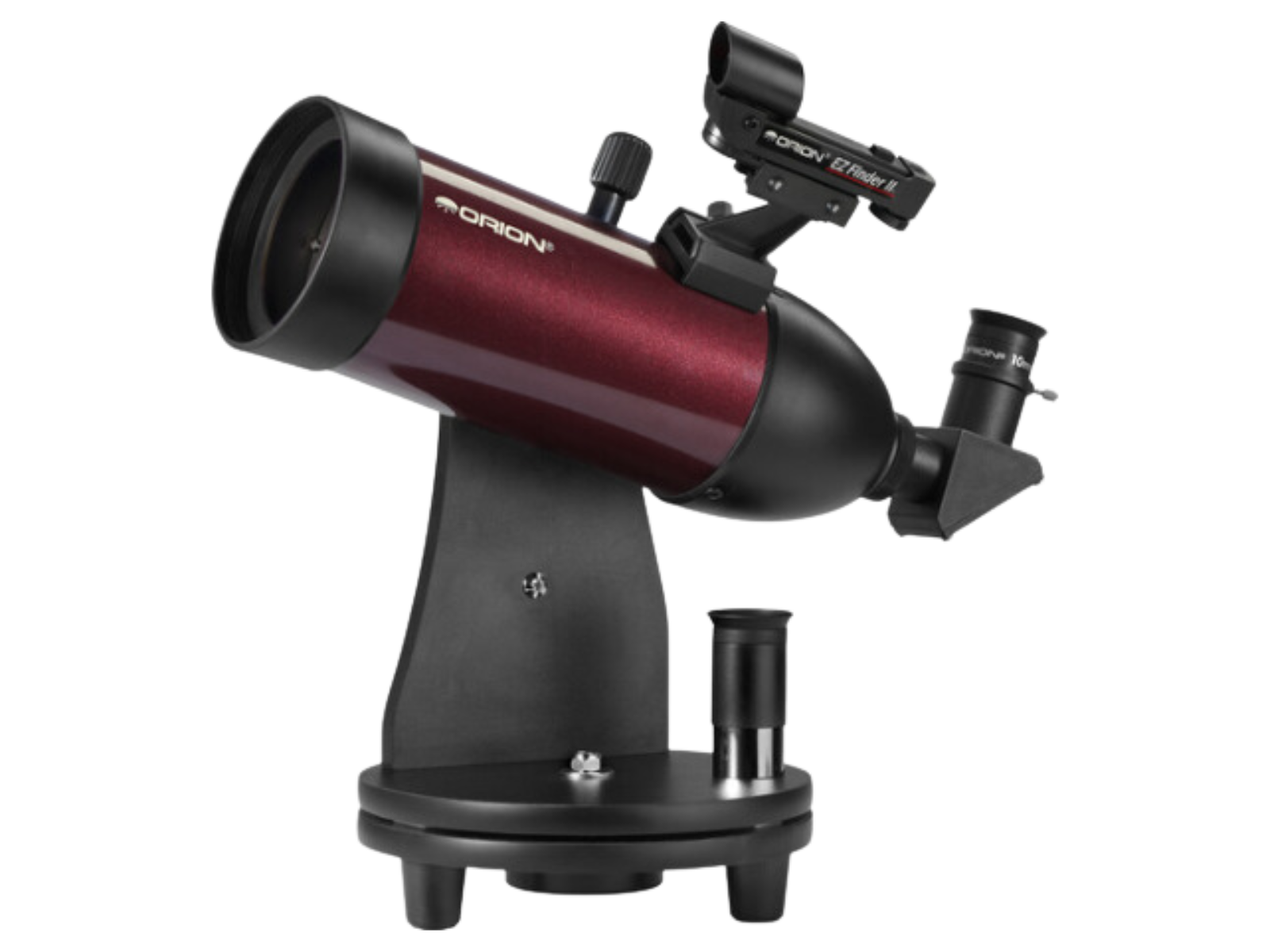By Planetarium Astronomer Scott Young
Choosing a first telescope is bit like buying a car – there’s no “best” car, but there is the one that will work best for you. It depends a bit on what you want to do with it, where you will observe from, and of course your budget.
 First step: educate yourself. Pick up Nightwatch by Terence Dickinson. It will provide you with information on a first telescope, and help you use whatever telescope you buy. This is THE best book for first-time astronomers, and will help you not only choose a telescope, but learn to use it as well.
First step: educate yourself. Pick up Nightwatch by Terence Dickinson. It will provide you with information on a first telescope, and help you use whatever telescope you buy. This is THE best book for first-time astronomers, and will help you not only choose a telescope, but learn to use it as well.
Second step: learn the sky. If you can’t point your finger at a galaxy, a star cluster, or a planet, you won’t be able to point your telescope at it either. Unless you spend big money, you’re not going to get a computerized telescope that will do everything for you – you still need to know where to look. Space is mostly empty space (hence the name), and so finding the interesting objects takes some work. Learn the constellations (again, Nightwatch is a great reference), use binoculars if you have them, get to know the sky, take an astronomy course (click here to learn about the current Dome@Home offerings), join an astronomy club (the local group is called the Royal Astronomical Society of Canada – Winnipeg Centre). All of these steps will help you get the most out of your telescope when you do get one, and will also help you know more about them before you buy one.
Now you’re ready for your first telescope. Here are some basic facts to help guide your choice.

The main thing about a telescope is its aperture – the diameter of the main lens or mirror. The bigger the aperture, the more “power” a telescope has – it gathers more light, it resolves finer detail, it makes objects look better. Of course, as the aperture increases the telescope also gets physically larger and more expensive.
Contrary to popular belief, magnification is not an important function of a telescope – any telescope can theoretically magnify any amount! What matters is, how much can a telescope magnify and still provide a clear image? Small department-store telescopes often claim “600x” or “1000x”, but that’s baloney. You can almost never use more than 200-300x on any telescope, because the atmosphere of the Earth is not steady enough – the image gets bigger but fuzzier, and you lose detail. Most observing is done in the 50x to 200x range of magnification. So, avoid any telescope advertised based on magnification – they’re trying to fool you into buying a junky telescope.
We also recommend you avoid a telescope with a computer or motors built in, unless you’re spending $800 or more – every dollar that goes into the computer is taken away from your optics, and you usually wind up with a telescope that isn’t very good optically or electronically. If you want this option, it will cost a significant amount of money if you want it to actually work. As an example, Orion’s computer-aided telescope line costs about $400 more than the equivalent manual scope.
One big question to consider: where are you using the telescope? If you have to carry it down stairs or load it in a car with a family every time you’re going to use it, I would recommend a different scope than if you’re going to use it mostly in your own backyard. Most “real” telescopes are bigger than the ones you see in camera stores, and are bigger than people expect. They’re not unreasonable, but they won’t fit in the back seat with two kids. The old-style “spyglass” on a spindly fold-up tripod that most people think of has been replaced by a sturdy large-diameter tube on a wooden box – they look more like a cannon.
Recommended Starter Telescopes
The ideal starter scope for an adult or serious teenager is a 6” Dobsonian reflecting telescope. A reflecting telescope uses mirrors instead of lenses to focus the light. (“Dobsonian” refers to the style of mounting – a simple, “lazy Susan” design that makes the telescope look a bit like a cannon). An Orion 6″ Dobsonian is just over $600 CDN (shipping and taxes included), and comes with an eyepiece, a finder scope, and everything you need to start observing. It’s a great scope with lots of power that you won’t outgrow. The rings of Saturn, moon craters, Jupiter’s moons, and thousands of star clusters, galaxies, and nebula are within reach of this scope. You can add an extra eyepiece of Barlow lens to give more magnification (for about $75 plus tax extra).

For ayounger child or someone just starting out, the Orion GoScope 80mm (over $300 CDN with shipping and taxes) is a perfect starting point. The scope will show you a lot of the brightest sights in the sky, including moon craters and the rings of Saturn, and let you track down dozens of the brighter star clusters and nebula as well.

I have personally used both of these scopes, and can recommend them from experience as great instruments for exploring the Universe. Even though I have access to larger telescopes, I still use my personal GoScope 80 and StarBlast 6 for stargazing.
We invite you to order through our trusted online distributor, Orion Telescopes. Alternatively, we also recommend a local company that sells and repairs telescopes, Side Lines Distribution.
The universe awaits!



